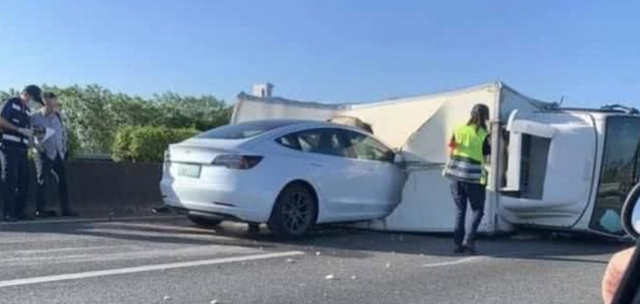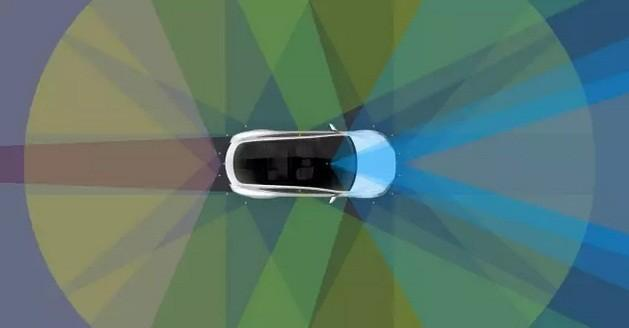This article is reproduced from the autocarweekly official account.
Author: Joey
Over a year ago, someone asked me what the differences were between ultrasonic radar, millimeter-wave radar, and lidar. At that time, I was really stumped by this question. The first thought that came to my mind was that there must be differences, whether in form or in functional characteristics, and they must perform their respective duties on the car. Otherwise, the manufacturer would not install them just for the sake of it. If they were really overlapping in functionality, it would not meet the principle of cost-saving for car manufacturers.
However, the fact is that although their working methods are different, the working principles of these three types of radar are to rebound when the medium encounters an obstacle, and to calculate the feedback speed of their own medium to determine the distance of the obstacle. This is somewhat similar to the principle of a bat detecting foreign objects.
Of course, ultrasonic radar and millimeter-wave radar also have their own limitations. For example, the precision of ultrasonic radar detection is not high; while millimeter-wave radar is greatly affected by the weather and is more easily interfered by high-power components in the car. Therefore, these two different products undoubtedly complement each other when stacked together.
Compared with these two types of radar, lidar can achieve richer functions. In addition to detecting the distance of obstacles, it can also explore the orientation, height, speed, attitude, and even shape of obstacles. That is to say, if ultrasonic radar and millimeter-wave radar mainly achieve the intelligent following, timely braking, and intelligent parking functions of vehicles at low speeds, then lidar is undoubtedly born for higher-level intelligent driving technology.
Therefore, it is not difficult to understand why today’s intelligent cars have begun to incorporate lidar into the list of necessary equipment. Recently, the extreme fox alpha S, which has become popular due to intelligent driving videos, has equipped three lidars. The much-watched NIO ET7 also stated that it will be equipped with lidar; and models that were not equipped with lidar from the beginning undoubtedly do not want to lag behind their competitors in this regard.
For example, the IM L7, which started pre-sales at the Shanghai Auto Show, stated that although it did not have it at first, it reserved an upgrade interface and could upgrade the lidar configuration for users in the future. Obviously, lidar seems to have become the direction of the next generation of automotive technology development without any dispute.
However, this world is never short of “nitpickers”. Just a few days ago, Tesla announced that starting from May, the Model 3 and Model Y in the North American market would no longer be equipped with radar sensors, canceling the millimeter-wave radar in front of the car, and only using cameras as the information acquisition channel for the autopilot system, let alone using lidar. Obviously, with Musk’s influence in the intelligent pure electric vehicle industry, this announcement is undoubtedly a blockbuster. So, will Tesla’s abandonment of radar once again complicate the already emerging direction of intelligent driving technology?
Musk’s nameless disgust for lidar is no secret. He has openly referred to lidar as the “appendix” of the human body and has repeatedly criticized this seemingly cutting-edge configuration. In Musk’s view, the detection of the external surrounding environment for autopilot technology should be based on cameras, completely simulating the human visual perception mode. Through human eyes (cameras), transmitted to the brain (computing chip), and then let the body (car) act.
Under Musk’s concept, a new watershed has emerged in the perception of intelligent driving technology, namely the lidar camp and the vision perception camp. In the vision perception camp advocated by Musk, the data obtained by the camera will be most similar to the world perceived by human eyes. After the images are captured by the camera, they will be identified and classified to provide a basis for the vehicle’s next move.
In this process, Tesla will classify and model the objects seen in daily road driving and upload them for comparison with the objects captured by the camera during daily driving, which is commonly referred to as rule-based algorithm. However, adopting this mode has a threshold that is difficult to overcome, which is the biggest pain point of the rule-based algorithm, i.e. corner cases, the so-called long tail problem. That is, in the process of daily driving, you cannot exhaustively model all scenarios, and there will always be omissions. Once the vehicle cannot identify them and makes wrong judgments, serious problems may arise.
The problem of corner cases has actually occurred multiple times in Tesla. Previously, there was a car accident in Taiwan, China, where the vehicle encountered a white container lying in the middle of the road on the highway. Because it was judged as blue sky and white clouds, the vehicle crashed into it directly, causing a very serious accident. If vision perception allows the car to see what humans can see, then the modeling algorithm needs to enable the car to recognize what humans can recognize.This is a long-term process, but various problems and significant costs will inevitably arise in the process of eliminating all tail-end issues. After all, no one wants to spend money to be guinea pigs in the continuous maturation of intelligent driving technology.

In fact, not to mention whether or not LiDAR is needed, the mere cancellation of millimeter-wave radar has already caused huge controversy in the North American market. Several institutions, including the National Highway Traffic Safety Administration (NHTSA), Consumer Reports, and the Insurance Institute for Highway Safety (IIHS), have suspended or canceled some safety endorsements for the Tesla Model 3 and Model Y.
Tesla has suffered even more than this. According to EV Sales’ latest European new energy vehicle sales ranking, the number of Tesla Model 3 deliveries in the European market was only 1,244 in April, a 95% drop from the 28,184 deliveries in March. This decline cannot be described as “cliff-like” but rather “falling off a cliff.” Obviously, no one can deny that safety issues have significantly affected consumer trust in the Tesla brand.
On the other hand, LiDAR itself can already detect a series of data such as the distance, size, and shape of obstacles. The vehicle detects the obstacle, but it does not need to fully understand what it is, it just needs to use the correct and reasonable way to avoid it, which can create a safer intelligent driving experience for users. Obviously, at the current technology stage, the inability of data modeling to exhaust the environment, the characteristic of LiDAR will undoubtedly become a more suitable intelligent driving perception solution.
Of course, LiDAR is not “all-knowing and all-powerful” and, like other types of radar, is also affected by weather. In extreme weather conditions such as rain and snow, ranging accuracy will be affected. At the same time, its ability to recognize objects also has a lot of room for improvement. What’s even more deadly is that LiDAR’s current price is very high.
Therefore, LiDAR inevitably needs to form a complementary perception system with millimeter-wave radar, ultrasonic radar, and cameras to provide support for safe intelligent driving.

Obviously, the battle between LiDAR and visual algorithm intelligent driving technology will still exist in the entire automotive industry for a long time. But for now, I would not hesitate to choose a technology route with more detection and perception hardware. After all, in this era of crazy technological evolution, complementary stacking is undoubtedly a more effective way to ensure user safety.Meanwhile, if one day, when everyone is using lidar and the scale and industrialization of this device truly mature, cost reduction will come rapidly. At that time, even someone as stubborn as Musk may not insist on saying no to this “appendix”.
<p>Meanwhile, if one day, when everyone is using lidar and the scale and industrialization of this device truly mature, cost reduction will come rapidly. At that time, even someone as stubborn as Musk may not insist on saying no to this <strong>"appendix"</strong>.</p>
This article is a translation by ChatGPT of a Chinese report from 42HOW. If you have any questions about it, please email bd@42how.com.